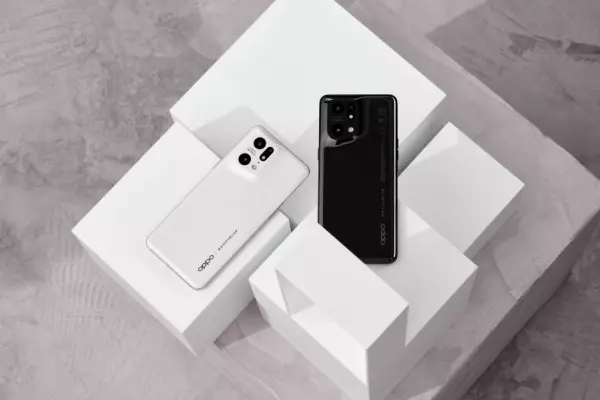Not using Google products is incredibly difficult. The company has its hooks deep into most of us for two reasons: it has tons of useful software products, and most of them are free to use.
With our mates across the Tasman living under the threat that the search engine might withhold its services in a spiteful tit-for-tat over Aussie's plan to make Google pay for news content, we wondered how hard it would be to leave Google behind.
Modern technology has evolved to the frankly scary point where we don’t fully understand the level at which it is integrated into our lives, and the companies that mine our data aren’t honest about how they get there.
The internet used to be a place you ‘went’, sat in front of the big grey family computer hoping no one would need to use the landline. Now it’s everywhere.
It is difficult to give up the useful free services Google provides because we’ve been conditioned not to pay for digital products. But it is even harder to divorce yourself from Google services because they are present in places you wouldn’t expect, always collecting data about you.
From the obvious to the granular, here’s a guide on how to start breaking up with Google’s most popular apps and services to reclaim some semblance of digital control. Breaking totally free takes some doing.
It’s up to you whether you hand your user data over to another tech giant like Apple or Microsoft – not using products or services from any major US tech company is practically impossible.
Ad tracking
Google makes the bulk of its money — 70.9 percent at last count — through digital advertising. By providing all its free services and hoping you don’t read the terms and conditions, the company takes your personal data and monetises it in exchange for the free stuff.
That used to seem like a good deal. But if you’re fed up with seeing ads for things you viewed elsewhere online, you can switch off ad personalisation on your Google account here. You’ll still get ads, they just won’t be for things Google thinks you want.
Managing, disabling, and deleting Google’s tracking of your web and app activity is also possible here.
Google will cheerily warn you that ads will be less personal, as though it knowing everything about you is a good and pure thing. Ignore it and turn everything off. On this page you can also set auto-delete options for your location history and YouTube Search history.
This is all in vain if you’re going to continue to use Google services anyway, though you can get around personalised tracking and data collection by signing out of your Google account on services like Chrome or YouTube.
But to go full cold turkey, you need to stop using them altogether.
Search
Google is so ubiquitous with internet search that we don’t ‘search’, we ‘Google’ things. According to Statista, Google had over 88 percent of worldwide search market share as of October 2020.
Stick it to Big G by using a different search engine. Microsoft’s Bing is second in the market with around 6 percent share, but you probably shouldn’t start giving your data to another tech giant if you’re trying to give up another.
A decent alternative is DuckDuckGo. It does the opposite of Google by promising not to collect any of your search data, instead driving revenue through private advertising. It has handy add-on features like tracker blockers that stop ads following you all over the web.
Browser
It’s no use switching search engine URLs if you’re still doing it from Chrome. Being signed into your Google account is handy, but there are alternatives that will still save your passwords without flinging all your data back to Google.
If you use a Mac or an iPhone, just use Safari. Apple’s excellent browser has tracking blockers on by default, but make sure to go into settings and change the default search engine from Google to another provider (Bing, Yahoo, and DuckDuckGo are options).
The most popular browser divorced from Google is Mozilla Firefox. It has grown into a mature, capable browser that doesn’t track you.
Smartphone
This one is tricky. If you use an Android phone, then you need to have a Google account to even use it. Every app you download or pay for a subscription via this is linked to your Google account.
Trying to use an Android phone without using Google services is not only difficult, but it will also stunt the functionality of the device itself. You’ll still have to download apps using the Google Play Store even if you delete Google’s own apps.
Go into your settings app and either turn off location tracking entirely, or app by app.
You can also opt out of ad personalisation on your Android phone via Settings > Google > Ads.
If you do want to try and drop Google entirely, you need an iPhone. Or revert to an old Nokia.
The king of free email services - Gmail - is hard to dethrone. But Google skims all your emails to link those flight tickets you bought to an automated calendar entry, or to remind you to pay a bill. This surfacing of data can be useful, but it’s all on a Google server somewhere, and it can all be used contextually to advertise to you on other platforms.
Much like using Edge or Bing, you might not want to sign up for an Outlook or Hotmail account instead of Gmail, but it’s an option. It shows how few people opt for a lesser-known alternative.
A solid choice is ProtonMail. Paying the Swiss company just 4 euros per month gets you an end-to-end encrypted email service and 5GB inbox storage, though there are options for more features at higher prices.
This doesn’t solve the loss of Google Calendar, but you’ll likely be able to fill it with Apple’s Calendar app or Outlook’s integrated calendar.
Maps
The way Google collects your location data by default is perhaps the creepiest and most invasive form of data tracking.
If you call up your location timeline, it shows you a timeline of everywhere — and it really is everywhere — you have been, via which route and how long you stayed there. Little red dots mark your life out in a terrifying digital breadcrumb trail across the globe. On this page, turn off location history. Kill it with fire.
On an iPhone or Mac, use Apple Maps.
It’s harder on Windows and Android. There aren’t any alternatives that are as good or as accurate as Google Maps, and switching is a frustrating exercise in losing functionality. But you also don’t need Google to remember you went to a bar in the Mount in 2017.
If you only need a map app for driving navigation, use Waze. It has real-time traffic feedback from users in a friendly interface and will serve you well.
You should get on with Here WeGo on desktop and mobile for everything else, and transport routing is accurate for New Zealand cities.
Cloud documents and storage
Google Docs, Sheets, and Drive could be impossible to drop if your business uses G Suite, but you can step back from them in your personal life. Once again, the main alternative is Microsoft, with the cloud-based Microsoft 365 and Word, Excel, and OneDrive.
But you could also use the offline versions of Word and Excel and then use a paid cloud storage service like Dropbox to save, store, and access files remotely.
This set up provides the same convenient access to documents anywhere and keeps you out of the Google loop. Only the service storing your files needs to be online, not the services themselves.
And that's it. Happy non-Googling everyone.














